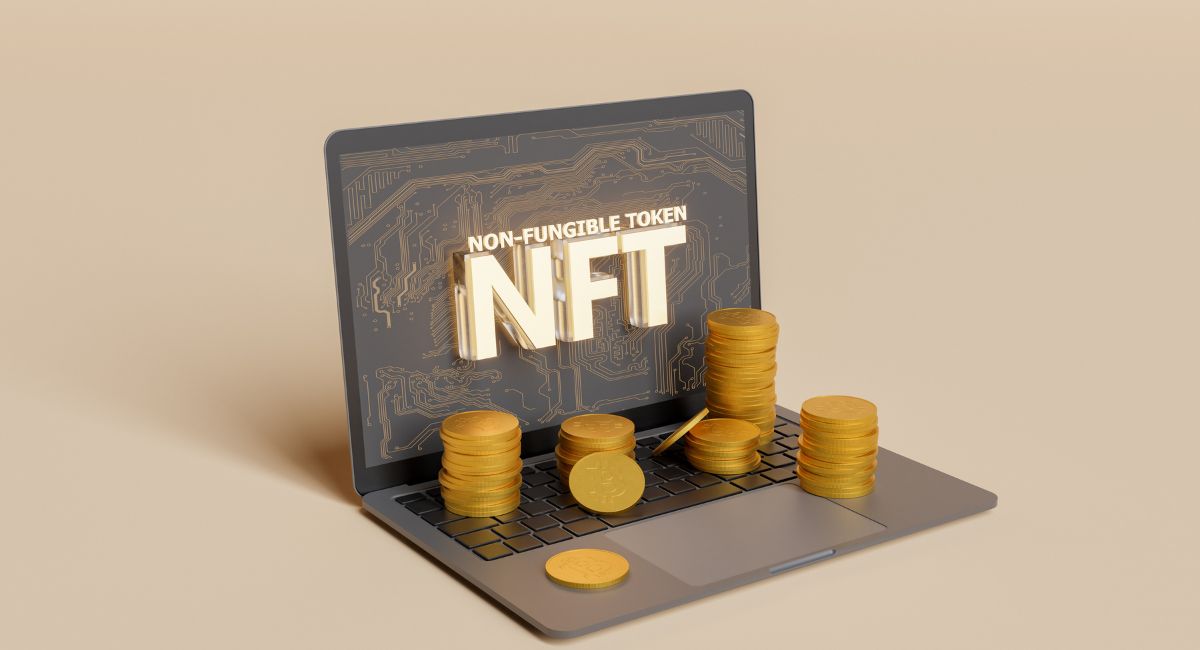A Deep Dive Into Off-Chain NFT Storage And Its Top 10 Key Components

Non-fungible tokens (NFTs) have emerged as a revolutionary force in the digital world, enabling ownership and authenticity verification of digital assets. As the NFT space evolves, the concept of off-chain NFT storage has gained prominence. In this article, we dive deep into the intricacies of off-chain NFT storage, exploring its definition, functionalities, and the utility it brings to the NFT ecosystem.
Understanding Off-Chain NFT Storage:
Off-chain NFT storage refers to the practice of storing the actual digital content of an NFT, such as an image, video, or any other multimedia file, outside the blockchain. While the blockchain retains the essential information about the NFT, including ownership and transaction history, the heavy multimedia files are stored off-chain, often on centralized or decentralized storage solutions.
The Mechanics of Off-Chain Storage:

Off-chain storage refers to the practice of storing data outside the blockchain, providing a way to reduce on-chain data bloat and associated costs. Here are the key mechanics and concepts related to off-chain storage:
- On-Chain vs. Off-Chain:
- On-Chain: All data and transactions are stored directly on the blockchain. This ensures transparency and immutability but can lead to scalability challenges.
- Off-Chain: Data is stored outside the blockchain, and only relevant information or proofs are recorded on-chain. This helps in scaling solutions and reducing the burden on the main blockchain.
- Data Hashing:
- On-Chain Hashes: Instead of storing full data, the blockchain often stores the hash (digest) of the data. This hash serves as a reference, providing a secure and efficient way to verify the integrity of off-chain data.
- Off-Chain Storage: Actual data is stored off-chain, and its hash is stored on-chain. The hash allows anyone to verify the integrity of the off-chain data by comparing it with the recorded hash on the blockchain.
- Interoperability:
- Communication Channels: Off-chain storage solutions often involve communication channels that facilitate interactions between on-chain and off-chain components. These channels can be established using technologies like state channels, sidechains, or layer 2 scaling solutions.
- Bidirectional Communication: Information can flow bidirectionally between the blockchain and off-chain storage, enabling secure and efficient data management.
- State Channels:
- Overview: State channels are off-chain frameworks that allow multiple parties to interact with each other directly, with only the final outcome recorded on the blockchain.
- Use Cases: State channels are commonly used for activities like microtransactions, gaming, and private negotiations, where frequent interactions occur between participants without the need for on-chain transactions after each step.
- Sidechains:
- Overview: Sidechains are separate blockchains that run in parallel to the main blockchain, often featuring their consensus mechanisms.
- Use Cases: Off-chain data can be processed and stored on sidechains, which then periodically synchronize with the main blockchain, reducing congestion and enhancing scalability.
- Layer 2 Scaling Solutions:
- Overview: Layer 2 solutions are protocols or frameworks built on top of existing blockchains to improve scalability and performance.
- Use Cases: Off-chain storage mechanisms are often implemented as layer 2 solutions, offering faster and more cost-effective transactions that settle on the main blockchain when necessary.
- Off-Chain Data Availability:
- Centralized Servers: Off-chain data is typically stored on centralized servers or distributed storage networks.
- Security Measures: Access controls, encryption, and redundancy measures are implemented to secure off-chain data, ensuring its availability and integrity.
- Commitment Schemes:
- Commitment Transactions: Commitment schemes involve transactions where parties commit to certain data or actions off-chain, and only the final result is broadcasted on-chain.
- Reduced On-Chain Load: This approach minimizes the number of transactions on-chain, reducing congestion and associated costs.
- Oracle Services:
- Oracles: Oracles are services that provide real-world data to smart contracts. They can fetch and verify off-chain data, providing it to on-chain smart contracts.
- Use Cases: Off-chain data, such as weather conditions or stock prices, can be accessed through oracles, allowing smart contracts to make decisions based on real-world information.
- Challenges and Considerations:
- Security Risks: Depending on the architecture, off-chain storage solutions may introduce new security considerations, especially if the decentralization of off-chain storage is compromised.
- Data Availability: Ensuring that off-chain data is available and reliable is a critical consideration to prevent potential issues or disputes.
In summary, off-chain storage is a strategy employed to optimize the efficiency and scalability of blockchain networks. By storing non-essential data off-chain and utilizing various mechanisms for communication and verification, developers can strike a balance between data integrity and system performance.
Top 10 Key Components of Off-Chain NFT Storage:

Off-chain NFT (Non-Fungible Token) storage involves storing the actual content or data associated with an NFT off the blockchain. This is done to address the limited storage capacity and high costs associated with storing large amounts of data directly on the blockchain. Here are the key components of off-chain NFT storage:
- Decentralized Storage Networks:
- Purpose: Off-chain NFT storage often leverages decentralized storage networks, where the file data is distributed across a network of nodes.
- Examples: IPFS (InterPlanetary File System) and Filecoin are decentralized storage solutions commonly used for off-chain NFT storage.
- Content Addressing:
- Purpose: Content addressing involves generating a unique hash (content identifier) based on the actual content of the file.
- Benefits: This ensures that the same content always results in the same identifier, allowing for efficient retrieval and verification.
- File Compression:
- Purpose: Before storage, files associated with NFTs may be compressed to reduce storage requirements and improve efficiency in transferring and retrieving data.
- Benefits: Compression helps optimize storage space, bandwidth usage, and overall network performance.
- Metadata Storage:
- Purpose: Metadata, which includes information about the NFT such as its title, description, and attributes, is often stored on-chain while the bulk of the content is stored off-chain.
- Benefits: Storing metadata on-chain ensures transparency and provides a reference point for retrieving the associated off-chain content.
- Linking Mechanisms:
- Purpose: Establishing a link between on-chain and off-chain components is crucial for associating metadata on-chain with the corresponding off-chain content.
- Methods: Linking can be achieved through URLs, content addressing, or specific identifiers that reference the off-chain data.
- Smart Contracts:
- Purpose: Smart contracts on the blockchain may be used to manage and enforce the rules and logic governing the off-chain NFT storage system.
- Benefits: Smart contracts can facilitate interactions, such as verifying ownership, controlling access, or executing actions based on off-chain data.
- Authentication and Access Controls:
- Purpose: Implementing robust authentication mechanisms and access controls ensures that only authorized users or smart contracts can modify or access the off-chain NFT data.
- Security: Protecting against unauthorized modifications and ensuring data privacy are critical considerations.
- Immutable Storage:
- Purpose: While off-chain storage solutions may not provide the same level of immutability as blockchain, implementing measures to ensure the integrity and immutability of stored content is crucial.
- Methods: Utilizing decentralized storage networks with built-in immutability features enhances the security of off-chain storage.
- Backup and Redundancy:
- Purpose: Implementing backup and redundancy measures is essential to ensure data availability and prevent data loss in case of node failures or other unforeseen issues.
- Strategies: Utilize redundancy across multiple nodes or storage providers to enhance reliability.
- Integration with Oracles:
- Purpose: Integrating with oracles allows smart contracts to fetch real-time or dynamic data from off-chain sources and use it in conjunction with NFTs.
- Use Cases: This can be particularly useful for NFTs representing real-world assets or information that may change over time.
Off-chain NFT storage is a crucial aspect of handling large and dynamic content associated with NFTs. By leveraging decentralized storage networks and implementing robust linking mechanisms, authentication, and access controls, developers can create a scalable and efficient system for storing NFT content off-chain while maintaining the necessary on-chain references.
Gaming project, free mint, low supply, with VC and Inferno Labs behind and with token? It seems to be the magic formula, do you know who I’m talking about?@DarkFrontiersGS
Dark Frontiers aims to drive mass adoption through innovative utility for Non-Fungible Tokens (NFTs),… pic.twitter.com/St5RmqlgSp
— VitoApH (@VitoApH) January 12, 2024
The Utility of Off-Chain NFT Storage:

The utility of off-chain NFT (Non-Fungible Token) storage lies in addressing the limitations of on-chain storage, providing more efficient ways to handle large amounts of data associated with NFTs. Here are key aspects that highlight the utility of off-chain NFT storage:
- Scalability:
- Challenge: Storing large files directly on the blockchain can lead to scalability issues, increasing transaction costs and slowing down the network.
- Solution: Off-chain storage allows for the storage of bulky content, such as high-resolution images, videos, or 3D models, without congesting the blockchain, thereby enhancing scalability.
- Reduced Gas Fees:
- Challenge: On-chain storage incurs gas fees for every transaction, making it expensive, especially for large files.
- Solution: By moving the bulk of the data off-chain, the associated gas fees are significantly reduced, making it more cost-effective for users and developers.
- Flexibility in File Types:
- Challenge: On-chain storage may have limitations on the types and sizes of files that can be accommodated.
- Solution: Off-chain storage provides flexibility, allowing NFTs to represent a wider range of digital assets, including multimedia content, interactive applications, and other data-intensive files.
- Decentralized Storage Networks:
- Benefit: Off-chain NFT storage often leverages decentralized storage networks like IPFS and Filecoin.
- Advantages: These networks provide decentralized, distributed, and censorship-resistant storage, enhancing the robustness and availability of NFT content.
- Efficient Metadata Handling:
- Challenge: Storing extensive metadata directly on-chain may become impractical, affecting transaction costs and efficiency.
- Solution: By separating metadata storage on-chain and content storage off-chain, the system becomes more efficient, ensuring that only essential information resides on the blockchain.
- Improved User Experience:
- Benefit: Users can experience faster transactions and interactions with NFTs as the bulk of the data is fetched from off-chain storage.
- Enhancement: This results in a smoother and more responsive user experience, particularly when dealing with media-rich or interactive NFTs.
- Reduced Blockchain Bloat:
- Benefit: Off-chain storage helps in reducing the size of the blockchain by offloading large data.
- Advantage: This reduces the burden on nodes and enhances the overall efficiency of the blockchain network.
- Dynamic and Evolving Content:
- Benefit: Off-chain storage accommodates NFTs with dynamic or evolving content.
- Use Cases: NFTs representing live data, changing media, or assets subject to frequent updates can leverage off-chain storage for efficient handling.
- Enhanced Security Measures:
- Benefit: Decentralized storage networks often come with built-in security features.
- Advantage: Off-chain NFT storage enhances security, leveraging encryption, access controls, and immutability provided by decentralized storage solutions.
- Interoperability with External Systems:
- Benefit: Off-chain storage facilitates interoperability with external systems and services.
- Use Cases: NFTs can reference off-chain data fetched from external APIs, allowing for integration with real-time or dynamic information, such as market prices, weather conditions, or other external events.
In summary, off-chain NFT storage offers a practical and scalable solution to handle the growing demands of digital assets represented by NFTs. It not only addresses the challenges associated with on-chain storage but also opens up new possibilities for creating diverse and dynamic NFT experiences.
Considerations and Challenges of Off-Chain NFT Storage:

While off-chain NFT (Non-Fungible Token) storage offers several advantages, it comes with its set of considerations and challenges. Understanding these factors is crucial for developers and users to make informed decisions. Here are key considerations and challenges associated with off-chain NFT storage:
Considerations:
- Decentralization and Security:
- Consideration: The degree of decentralization in off-chain storage networks is crucial.
- Importance: A highly decentralized network provides better security and resistance against single points of failure or censorship.
- Data Privacy:
- Consideration: Off-chain storage involves handling data outside the immutable blockchain, raising concerns about data privacy.
- Mitigation: Implementing strong encryption and access controls helps address privacy concerns and ensures data confidentiality.
- Reliability of Storage Providers:
- Consideration: Off-chain storage relies on decentralized storage providers, and their reliability can vary.
- Risk Management: Employing redundancy, backup mechanisms, and using reputable storage providers mitigates the risk of data loss.
- Integration with Smart Contracts:
- Consideration: Ensuring seamless integration between on-chain smart contracts and off-chain storage is crucial.
- Solution: Implementing robust linking mechanisms and establishing clear communication channels between the blockchain and off-chain storage facilitates integration.
- File Retrieval Speed:
- Consideration: The speed of retrieving off-chain files may impact user experience.
- Optimization: Utilizing efficient content addressing and decentralized storage solutions helps optimize file retrieval speed.
- File Interoperability:
- Consideration: Different off-chain storage solutions may have varying compatibility with file types.
- Compatibility Testing: Ensuring that the chosen storage solution supports the required file types and formats is essential for interoperability.
- Cost Management:
- Consideration: While off-chain storage can reduce on-chain gas fees, it may involve costs associated with using decentralized storage networks.
- Cost Analysis: Developers need to analyze and manage the costs associated with storing data off-chain, taking into account factors like storage space and retrieval fees.
- Upgradability and Maintenance:
- Consideration: The need for updates or changes in off-chain storage solutions may arise.
- Maintenance Plans: Planning for upgradability and implementing maintenance procedures ensures the long-term viability and efficiency of the off-chain storage system.
- Regulatory Compliance:
- Consideration: Compliance with data protection regulations and legal standards is essential, especially when handling user data off-chain.
- Legal Framework: Developers must be aware of and adhere to the regulatory frameworks governing data storage and privacy in the jurisdictions they operate.
Challenges:
- Network Latency:
- Challenge: Depending on the architecture, fetching data from off-chain storage may introduce latency.
- Optimization: Employing caching mechanisms or optimizing the content retrieval process helps mitigate latency challenges.
- Centralization Risks:
- Challenge: Some off-chain storage solutions may have elements of centralization, posing risks similar to traditional centralized systems.
- Decentralization Efforts: Choosing and supporting storage solutions with decentralized and community-driven governance minimizes centralization risks.
- Storage Capacity Limits:
- Challenge: The capacity of off-chain storage providers may be limited.
- Scaling Strategies: Implementing strategies such as sharding or utilizing multiple storage providers helps overcome storage capacity limitations.
- Orphaned or Unreachable Data:
- Challenge: Data stored off-chain may become orphaned or unreachable if the associated storage providers go offline or cease operations.
- Redundancy Measures: Employing redundancy and failover mechanisms ensures data availability even in the face of storage provider issues.
- Interoperability Standards:
- Challenge: Lack of standardized protocols for off-chain storage interoperability may hinder seamless integration across different platforms.
- Community Collaboration: Collaboration within the development community to establish interoperability standards can address this challenge.
- User Experience:
- Challenge: Balancing the benefits of off-chain storage with an optimal user experience can be challenging.
- User Feedback: Continuous user feedback and testing are crucial to refining the user experience and addressing any usability challenges.
- Ensuring Immutability:
- Challenge: Ensuring the immutability and integrity of off-chain data can be more challenging compared to on-chain data.
- Verification Mechanisms: Employing cryptographic verification mechanisms and regular audits helps maintain data integrity.
Understanding and carefully addressing these considerations and challenges are essential for successful implementation and utilization of off-chain NFT storage solutions. Striking a balance between decentralization, security, and user experience is key to realizing the full potential of off-chain storage in the NFT ecosystem.
The Future of Off-Chain NFT Storage:

- Integration with Layer 2 Scaling Solutions:
- Off-chain NFT storage is likely to integrate further with Layer 2 scaling solutions, such as sidechains and state channels. This integration aims to improve transaction throughput and reduce costs, providing a more seamless experience for users.
- Advancements in Decentralized Storage Networks:
- Continued advancements in decentralized storage networks like IPFS, Filecoin, and others are expected. These networks may introduce features such as increased storage capacity, improved retrieval speed, and enhanced security protocols, making them even more attractive for off-chain NFT storage.
- Standardization of Off-Chain Storage Protocols:
- The development of standardized protocols for off-chain storage is likely to emerge. Standardization can promote interoperability, enabling NFTs stored off-chain to be easily accessed and utilized across various platforms, marketplaces, and applications.
- Dynamic and Interactive Content:
- Off-chain NFT storage will support more dynamic and interactive content. NFTs may evolve from static images to include interactive elements, 3D models, videos, and other immersive experiences. Off-chain storage provides the flexibility needed to handle these data-intensive forms of content.
- Enhanced Metadata Handling:
- Improvements in metadata handling will play a significant role in the future of off-chain NFT storage. Efforts to optimize metadata storage on-chain and facilitate efficient communication between on-chain smart contracts and off-chain data will enhance overall NFT functionality.
- Cross-Chain Compatibility:
- Off-chain storage solutions may become more cross-chain compatible. This means that NFTs stored off-chain can seamlessly move between different blockchain networks, allowing for increased liquidity and accessibility across various ecosystems.
- Decentralized Identifiers (DIDs) and Verifiable Credentials:
- The integration of decentralized identifiers (DIDs) and verifiable credentials may enhance the identity and authenticity aspects of off-chain NFT storage. Users could have more control over their NFT-related data, including ownership history and provenance.
- User-Centric Storage Solutions:
- Future off-chain NFT storage solutions may prioritize user-centric features, focusing on ease of use, privacy, and data ownership. Decentralized storage solutions could provide users with greater control over their data and how it is shared or accessed.
- Collaboration with Oracles and Real-World Data:
- Integration with oracles and real-world data sources will likely expand. NFTs may increasingly reference off-chain data for real-time information, making them more dynamic and responsive to external events or conditions.
- Regulatory Compliance and Data Governance:
- Future developments may include enhanced features for regulatory compliance and data governance. Off-chain storage solutions may evolve to provide more robust tools for ensuring compliance with evolving data protection regulations and legal standards.
- AI-Driven Content Management:
- The future may see the integration of artificial intelligence (AI) for more efficient content management in off-chain NFT storage. AI algorithms could assist in categorizing, organizing, and optimizing large datasets associated with NFTs.
- Community-Driven Development:
- Community-driven development and open-source collaboration will continue to shape the future of off-chain NFT storage. Decentralized storage networks and protocols often benefit from community contributions, fostering innovation and adaptability.
As the blockchain space evolves, the future of off-chain NFT storage will likely be characterized by a combination of technological advancements, community collaboration, and a focus on improving user experiences and scalability. These developments aim to unlock new possibilities for NFTs and contribute to the broader adoption of blockchain-based digital assets.
Conclusion:
Off-chain NFT storage represents a strategic solution to the challenges posed by storing large multimedia files directly on the blockchain. Its cost-efficiency, scalability benefits, and support for diverse multimedia content make it a valuable addition to the NFT ecosystem. However, careful consideration of potential challenges, such as centralization concerns and integration complexities, is essential for unlocking the full potential of off-chain NFT storage in the evolving digital landscape.
Related posts
Editor's Choice
- Can Crypto Payments In 2024 Replace Debit Cards In The Future: Pros & Cons Of This Amazing Card
- Metaverse In 2024: Haptic Technology Is Bringing An Amazing Touch To Virtual Worlds
- Top 3 Altcoins for 2500% Returns by July 2024: Bonk (BONK), Hump Token (HUMP), Pepe Coin (PEPE)
- World Of Amazing Open Metaverse: The Rise of Interoperable Platforms In 2024
- Penguiana Presale off to a Great Start, Raises 600 SOL, Set to List On Two Top Tier Exchanges After Presale
Hottest Blockchain News Daily
Get our latest posts and announcements in your inbox.
[cn-social-icon attr_class=”social-share-side”]



























































